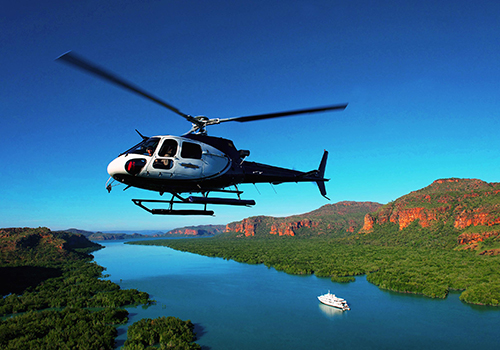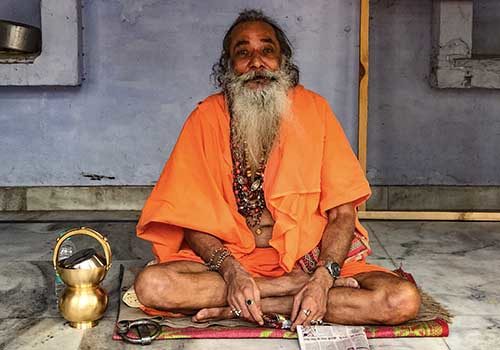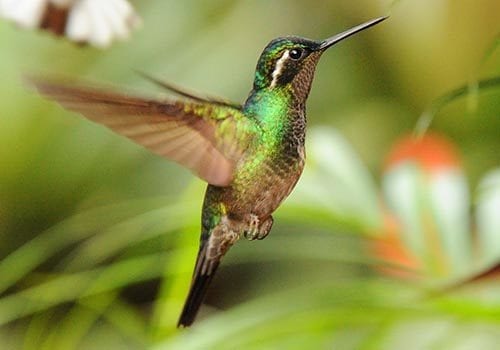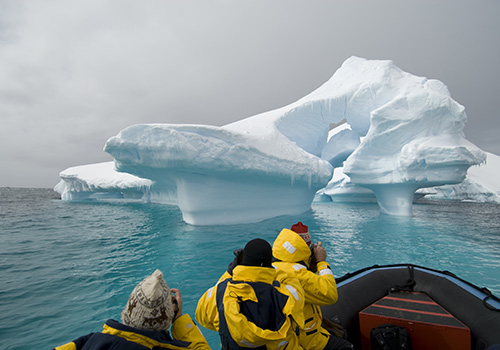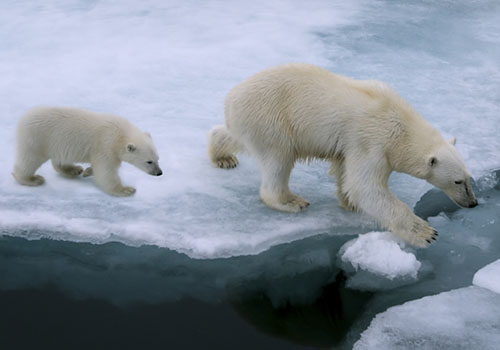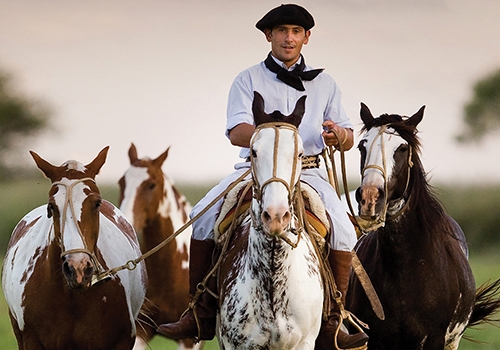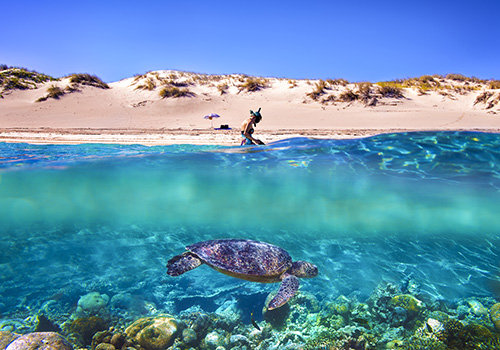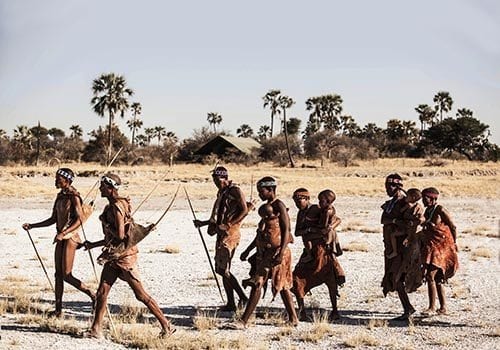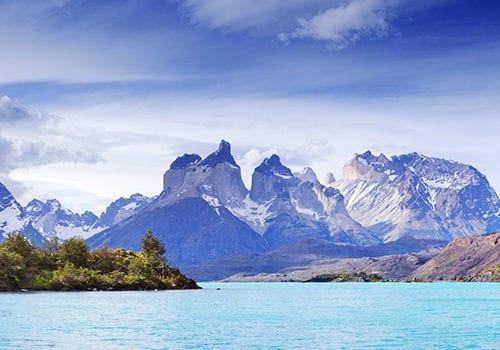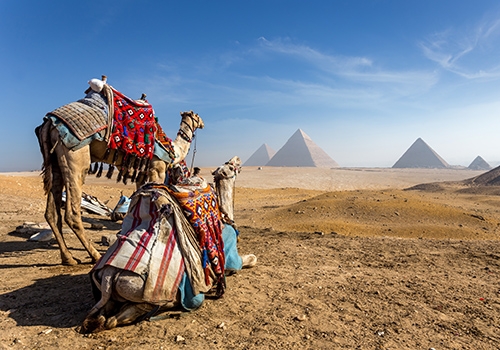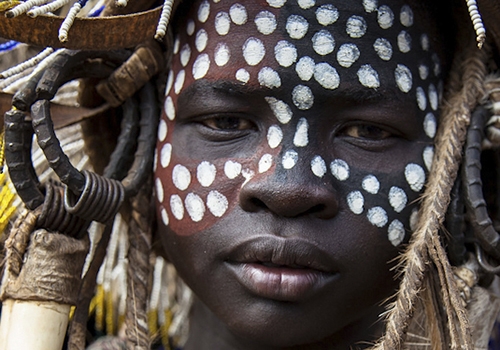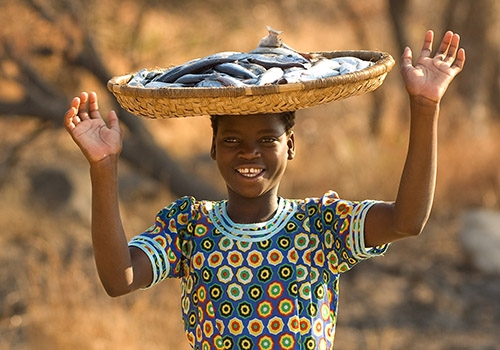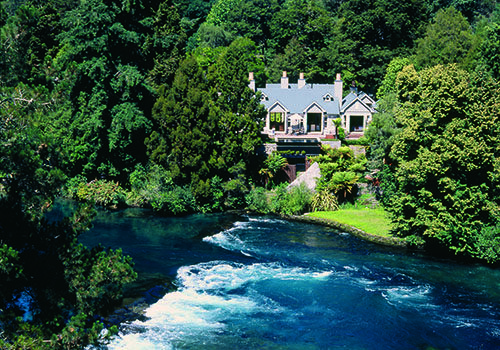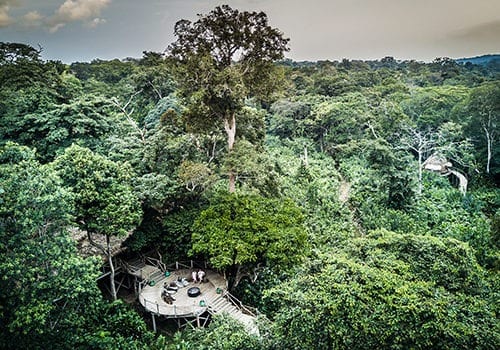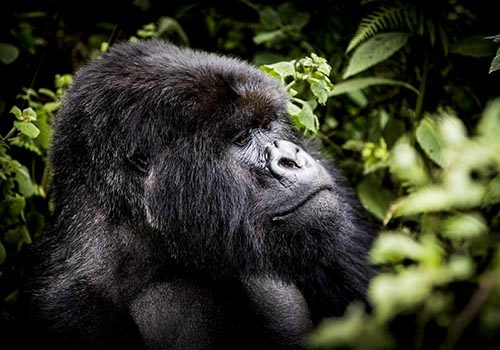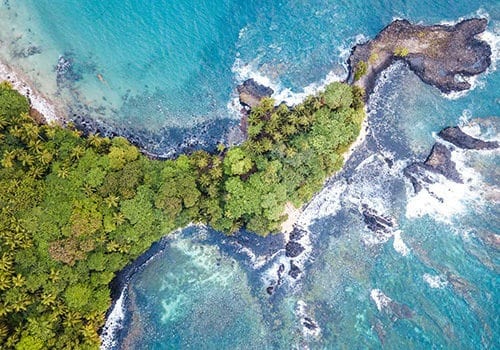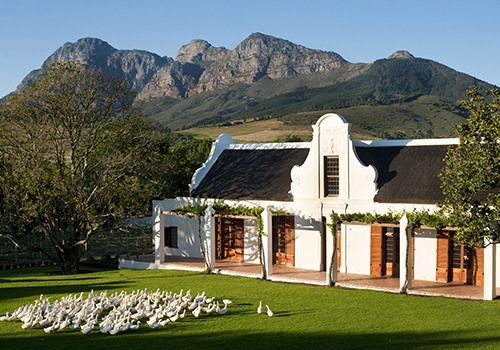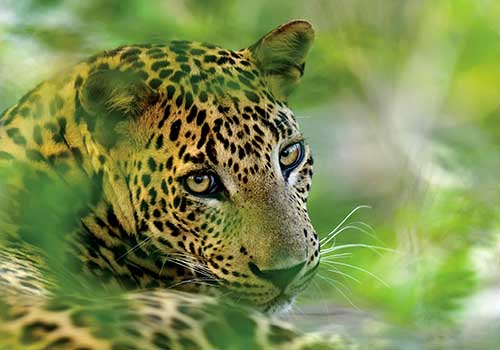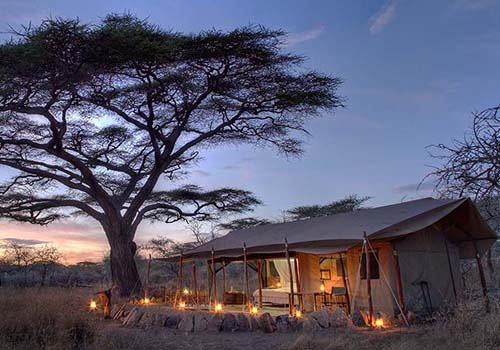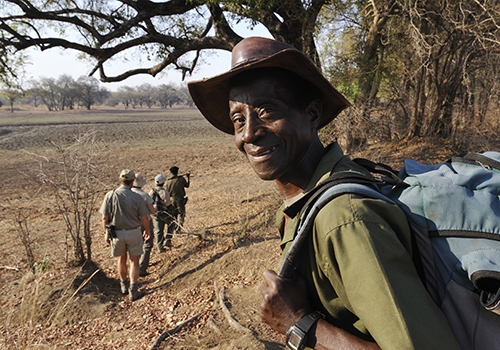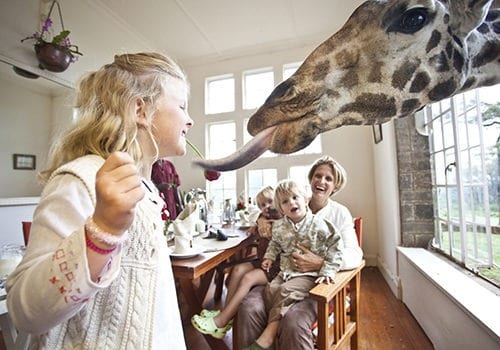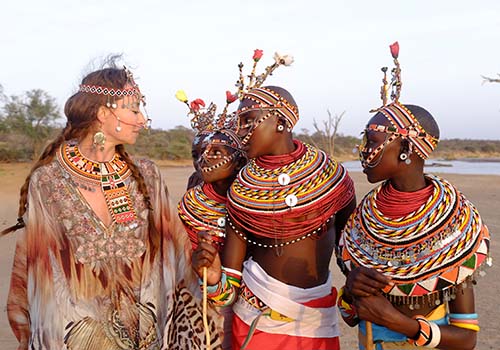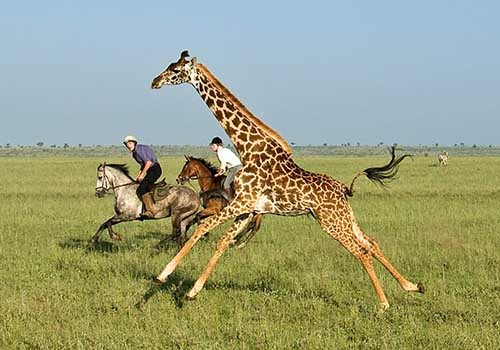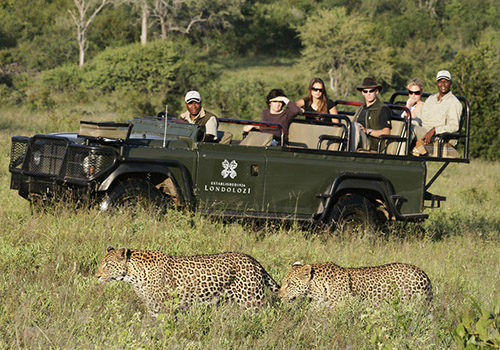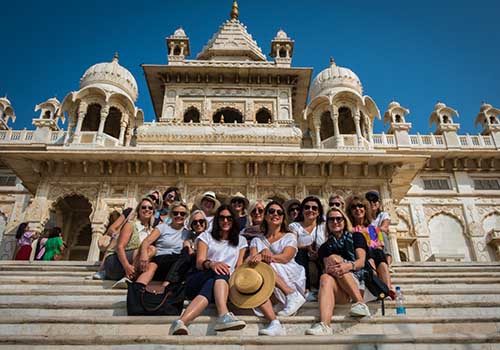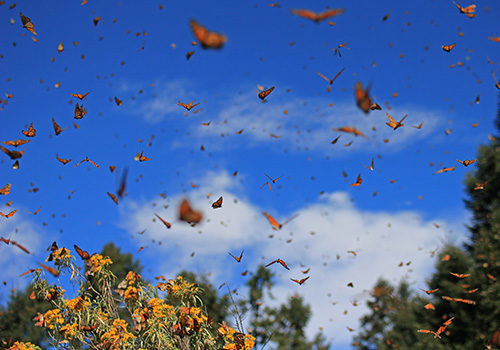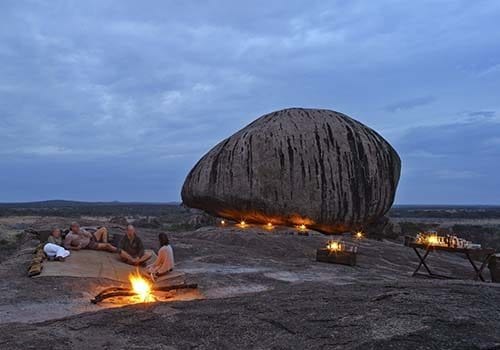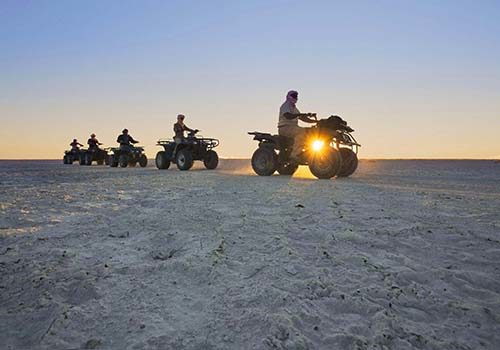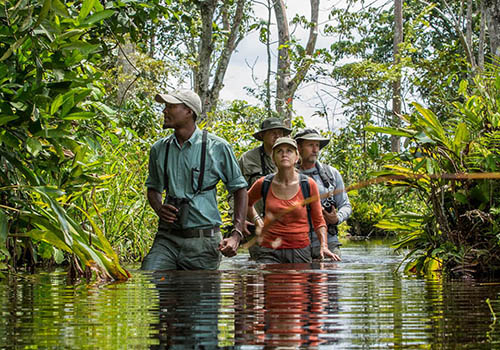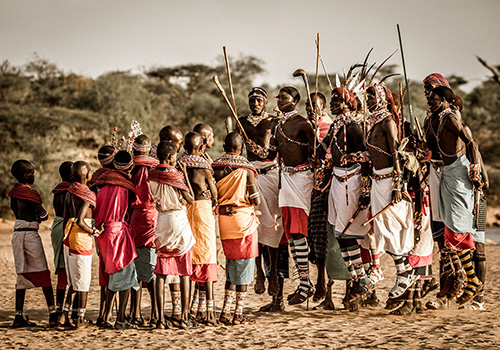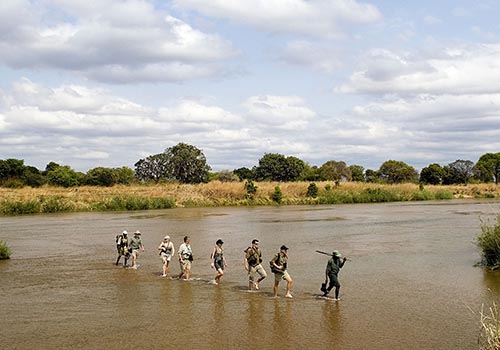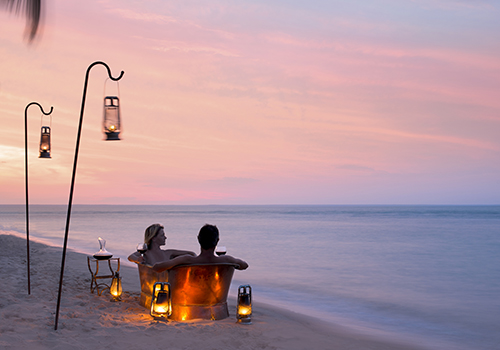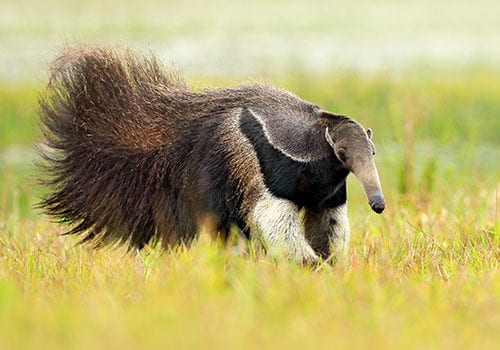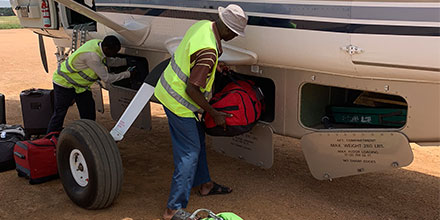
KEY INFORMATION TO PREPARE FOR YOUR JOURNEY
Uganda, an East African gem known for its cultural diversity, stunning landscapes, and abundant wildlife is located at the heart of the continent and shares its borders with Kenya, Tanzania, Rwanda, South Sudan, and the Democratic Republic of Congo.
Boasting an array of highlights, one of its most famous attractions is the lush and verdant Bwindi Impenetrable Forest, home to nearly half of the world’s remaining mountain gorillas. Gorilla trekking here provides a once-in-a-lifetime opportunity to observe these magnificent creatures in their natural habitat.
For adventure enthusiasts, the mighty Nile River offers an adrenaline rush with activities like white-water rafting and kayaking. Jinja, often referred to as the “Adventure Capital of East Africa,” is where the Nile’s powerful currents meet the thrill of water sports.
Uganda’s diverse landscapes include the serene beauty of Lake Victoria, the second-largest freshwater lake in the world, where you can unwind on tranquil beaches and engage in water-based activities. The Queen Elizabeth National Park and Murchison Falls National Park present an incredible variety of wildlife, from lions and elephants to crocodiles and hippos, set against the backdrop of stunning savannahs and lush forests.
This information will assist in preparing for your departure and includes helpful travel hints for when you are there. For detailed pre-departure information for Africa on the whole please refer to our AFRICA pre-departure information.
PLEASE NOTE: All pre-departure information was correct at the time of writing, but should be used as a guide only since requirements can change at short notice and without warning. Consult Smart Traveller or contact the High Commission of the Republic of Uganda or the appropriate authority prior to departure to confirm all details.
AT A GLANCE
UGANDA KEY FACTS
Time: GMT +3 hours | AEST -7 hours
Capital: Kampala
International Airport(s): Entebbe International Airport (EBB)
Official languages: English & Swahili, as well as over 40 indigenous languages
Religion: The predominant religion in Uganda is Christianity
Electrical Current: 240V | UK 3 square pin round pin – Type G
Currency: Ugandan Shilling | UGX or USD
Australian Consulate in Kampala: Protea Hotel by Marriot Kampala Skyz 1 Water Lane, Naguru | T: (+256) 393 515 865 | E: australianconsulate.ug@gmail.com | www.kenya.highcommission.gov.au
Visa: Yes – currently required for Australian & New Zealand passport holders – refer to ‘Passport and Visa Requirements‘ for further details.
USEFUL WEBSITES
Smart Traveller – https://www.smartraveller.gov.au/destinations/africa/uganda
Travel Doctor-TMVC – https://www.traveldoctor.com.au/destinations/uganda
Uganda High Commission – https://canberra.mofa.go.ug/
PUBLIC HOLIDAYS
January 1: New Year’s Day
January 26: Liberation Day
February 16: Janani Luwum Day
March 8: Women’s Day
Friday before Easter: Good Friday
Monday after Easter: Easter Monday
End of Ramadan: Eid al-Fitr*
May 1: Labour Day
June 3: Martyr’s Day
June 9: National Hero’s Day
Feast of the Sacrifice: Eid al-Adha*
October 9: Independence Day
December 25: Christmas Day
December 26: Boxing Day
*As both of these holidays are based on the Islamic lunar calendar the precise date is determined by the moons cycle.
PASSPORT & VISA REQUIREMENTS
PASSPORTS
Your passport must be valid for at least six months after your return to Australia and have at least two blank pages for every entry and country you intend to visit on your journey. If your passport does not meet these requirements you must obtain a new one. The Australian Passport Office website is www.passports.gov.au.
It is a wise precaution to carry a photocopy of your passport separately and leave a copy at home. This will aid authorities in processing a new passport should yours get stolen or lost.
If you have dual citizenship and more than one passport, we strongly recommend that you use only one of these during your travels, as in some countries it is considered illegal to have two or more passports. Be sure to use the same passport on entry and exit from a country, and never surrender your passport.
If your passport name is different to your commonly used name, advise us of this and ensure your airline reservations match those of your passport name.
VISAS
Australian and New Zealand passport holders require a Tourist Visa to enter Uganda and there are two options.
Single entry and East African tourist visas are all available with further details noted below. Please discuss which option might be most appropriate with your travel consultant.
We recommend that you apply for a three month (90-day) visa as they are valid for entry from the date of issue.
All visa applications must be made on the Uganda Ministry of Internal Affairs website: https://visas.immigration.go.ug/. We can provide detailed instructions for this process if required – just ask.
Please note:
- Visa fees are non-refundable if visa is rejected
- Incomplete applications will be deferred for a maximum of 90 days. If the application is still incomplete by then payment will be lost.
- You must present the printed eVisa on arrival
SINGLE ENTRY VISA
A Single Entry Visa is available online from the Uganda Ministry of Internal Affairs.
The application fee is US$55.
Visas cannot be obtained on arrival.
EAST AFRICAN TOURIST VISA
An East African Tourist Visa (EATV) allows you simultaneous entry into Kenya, Uganda and / or Rwanda. The first country you enter must be the issuer of the visa, and from there you can move within the two other countries without applying for another visa or paying another visa fee. This is only during the 90 day validity of your visa.
The cost of an EATV is US $101.
Note: this visa does NOT grant you entry into Tanzania.

CLIMATE, WEATHER & SEASONS
CLIMATE
Uganda experiences a wet, tropical climate but being situated on the equator means that the temperature does not fluctuate much throughout the year. However, it does have wet and dry seasons which follow a similar pattern to other countries in East Africa.
March, April, May are known as the ‘long rains’ when torrential downpours can occur. The months of July through to October are the driest, although even during these months there will be some rain. The second rainy season then begins in November which provides shorter, more variable rain.
Gorilla trekking is a year-round activity but it is best during the drier months – January and February, and June through to October. As it can rain during any month we always recommend taking waterproofs and appropriate clothing.
KEY SEASONS
- March to May: Long rains
- June to October: Long dry season
- November to December: Short rains
- January to February: Short dry season
| ENTEBBE | JAN | FEB | MAR | APR | MAY | JUN | JUL | AUG | SEP | OCT | NOV | DEC |
|---|---|---|---|---|---|---|---|---|---|---|---|---|
| Temperature (°C) | 17-27 | 17-27 | 18-27 | 18-26 | 18-26 | 17-25 | 16-25 | 16-25 | 16-26 | 17-26 | 17-26 | 17-26 |
| Rainfall (mm) | 50-100 | 50-100 | 100-150 | 200-250 | 200-250 | 50-100 | 0-50 | 0-50 | 0-50 | 50-100 | 100-150 | 100-150 |
| BWINDI | JAN | FEB | MAR | APR | MAY | JUN | JUL | AUG | SEP | OCT | NOV | DEC |
|---|---|---|---|---|---|---|---|---|---|---|---|---|
| Temperature (°C) | 10-27 | 11-27 | 11-27 | 12-26 | 12-26 | 10-26 | 9-27 | 10-27 | 11-27 | 11-27 | 11-26 | 11-27 |
| Rainfall (mm) | 50-100 | 50-100 | 100-150 | 150-200 | 100-150 | 0-50 | 0-50 | 0-50 | 50-100 | 50-100 | 100-150 | 100-150 |

LUGGAGE & PACKING
LUGGAGE
Charter flight companies and some safari operators impose strict luggage restrictions.
The maximum luggage weight specific to your journey is 15 kgs including camera equipment and hand luggage for travel through Uganda. Your bags must be soft-shelled and malleable.
If your luggage does not meet the criteria the charter companies will either leave your luggage behind, charge you for an extra seat onboard the aircraft (if one is available), or charter your bags separately at your cost. The charter planes have restricted space onboard, and, above all, the regulations are in place for your safety.
And if you are wondering how to pack everything in and keep it under weight read our blog – How to pack for a safari and keep it under 15kg
For further information on luggage and packing please refer to our AFRICA pre-departure information.
CHARTER FLIGHTS
The luggage storage on many charter flights across Africa looks like this:
The weight limit is a strict safety requirement to ensure the balance and carrying capacity of small aircraft.
HEALTH & VACCINATIONS
VACCINATIONS
It may be necessary to take medical precautions before, and whilst travelling. As we are not qualified to offer advice, we recommend you contact your GP or the Travel Doctor-TMVC who have the most up‐to-date information available. Requirements are highly personal depending on your health profile and the activities in your itinerary. Some vaccinations must be given well in advance of travel, so we suggest seeking medical advice as soon as you start to plan your trip. Be sure to ask what vaccinations or medications may be required to enter Uganda and to re-enter Australia.
You can also refer to SmartTraveller for a guide as to what may be required, however, you should always seek professional medical advice before travelling.
YELLOW FEVER : Vaccinations are compulsory for entry into Uganda. Proof of Yellow Fever inoculation is also required for entry into other African countries after visiting Uganda and for re-entry into Australia if you have been to an area where Yellow Fever exists (this includes airport transfers of more than 12 hours). Speak to your GP or a travel doctor about this.
For further information on health and vaccinations please refer to our AFRICA pre-departure information.
INSURANCE & AMREF FLYING DOCTORS
INSURANCE & AMREF FLYING DOCTORS
You should ensure you have comprehensive travel insurance before you leave for any destination. When travelling in Uganda with The Classic Safari Company you will additionally have AMREF cover.
WHAT IS AMREF FLYING DOCTORS COVER FOR?
Amref Health Africa (formerly the African Medical and Research Foundation) is the largest African health development non‐governmental international organisation based in Africa and is the leading African‐based aero‐medical and health assistance provider. AMREF is offers a 24hr emergency contact centre, the best in‐flight care and equipment, the fastest response times and are considered the most reliable. As many of safari camps and lodges in East Africa are located in extremely remote areas it is imperative that, in the unfortunate case of a medical emergency, you are able to reach a well-equipped hospital fast, with expert care en route. And that is where AMREF steps in.
Whilst most good travel insurance policies will include medical evacuation cover, inevitably emergencies arise out of hours , and there are often delays whilst (mandatory) authority is sought from your chosen international medical insurer. This can mean the difference between life and death. As a result most, if not all, safari operators will not accept clients on any of their itineraries, or in their camps or lodges, who are not covered for medical evacuation by a flying doctor membership, regardless of whether your travel insurance policy also covers this. The cost for AMREF cover is therefore automatically included in the cost of your itinerary designed and booked by The Classic Safari Company.
MONEY MATTERS
CURRENCY AND EXCHANGE
Uganda’s currency is the Ugandan Shilling (UGX) which is divided into 100 cents. Australian dollars cannot be exchanged for UGX so travel with US dollars that can then be exchanged at banks, bureau de change and at some hotels.
It’s best to take a mixture of money – credit card, debit card or travel cash card, plus cash just in case. Small denominations of USD are advisable – especially for tipping. If all else fails, have someone you can depend on who will make an emergency transfer of funds.
ATM machines are available in most cities & towns, are NOT widely available beyond that so do rely on these as your sole source of funds. Please be vigilant if you do withdraw cash.
Major international credit cards such as Visa and Mastercard are widely accepted. AMEX is not so popular and in some instances is not accepted at all. Please note that you need to take your physical credit card, and you need to know your PIN number, as not all places will allow you to ‘tap’. In some cases you may also be asked to sign.
It is recommended that you DO NOT change money on the black market as you are more likely to receive a lower rate of exchange or fake notes.
TELL YOUR BANK
We highly recommend you advise your bank of your destinations and travel dates. This should prevent any of your transactions being deemed as ‘out of the ordinary’ (and possibly stopped) due to their unexpected location.

POWER, TECH & PHOTOGRAPHY
POWER
There are basically two main voltage systems used around the world: 110 Volt ‐ USA, Canada, Spain & Japan 220 Volt ‐ the rest of the world. In simple terms, the power supply available at the socket is roughly twice as powerful in 240V countries as in 110V countries.
The voltage in Uganda is 240 Volts, therefore if you wish to use any electronic devices from Canada, the US or Japan you’ll need a voltage converter AND a plug adapter. Australia operates a 220V currency and therefore you only require an adapter for Australian appliances.
The adaptor you will need for Uganda is a TYPE G or, alternatively you may prefer to invest in an International Travel Adaptor that provides you with more than one option.
Many adaptors also have a USB port so you can plug your smart phone, or I‐product directly into the adaptor.
For the latest & most up to date information about voltage and what adaptors to travel with refer to: www.korjo.com
ADAPTORS
Uganda uses a 240V electrical current and a type G socket (UK 3 square pin)


GORILLA TREKKING
GORILLA TREKKING GUIDELINES
Trekking to see mountain gorillas is surely one of the most extraordinary wildlife experiences in the world and is bound to be a highlight on any African itinerary. Worldwide there are only around 1,000 mountain gorillas remaining in the wild – all living in Rwanda, Uganda and Congo. Gorilla trekking was introduced in Uganda as a form of sustainable wildlife tourism to support the conservation of these critically endangered primates. After its introduction, populations of mountain gorillas have seen significant growth and they are considered to be the only species of great ape with an increasing population. Gorilla tourism remains fundamental to this success and it also helps to create jobs and produce an economy for the surrounding communities.
GORILLA GROUPS & PERMIT ALLOCATION
There are a total of 15 habituated gorilla families in Uganda, 12 of which are located in Bwindi Impenetrable Forest National Park. There are a maximum of eight gorilla permits allocated to a gorilla family each day. The gorilla permits are assigned to a specific area of the forest where that particular gorilla family has its territory.
Gorilla trekking permits are in extremely short supply and it is highly recommended you book your permit well in advance. Permits can only be secured with payment – so no matter how far in advance you are booking you must pay for your permit immediately.
HABITUATION
In order to become habituated to the presence of tourists each gorilla group has undergone an extremely delicate process. Over the course of at least five years researchers spend time with the gorillas to gradually get them accustomed to human presence. This allows a few privileged visitors to safely observe them in the wild. However, the gorillas are by no means tame and care needs to be taken when around these magnificent animals. Please read the rules and regulations which must be followed.
PACKING LIST
- A small, lightweight backpack
- Hiking boots or solid shoes with grip – ideally waterproof
- Walking socks (long enough to tuck your trousers into) plus gaiters to wear over your trousers and shoes
- Leather or heavy canvas gloves – thick gardening-style gloves are ideal
- A waterproof jacket with a hood
- T-shirt or shirt – despite the damp it is likely to be warm
- Long pants – ideally trekking pants or lightweight cotton/cargo pants (not jeans as they are heavy when they get wet)
- Brimmed hat – ideally waterproof
- Water bottle – take more than you think you’ll need) & snacks to keep you going. A packed lunch will be provided by your hotel but food is not allowed near the gorillas.
- Camera equipment including spare batteries, memory cards etc.
- A dry bag is a good idea for camera equipment whist not in use.
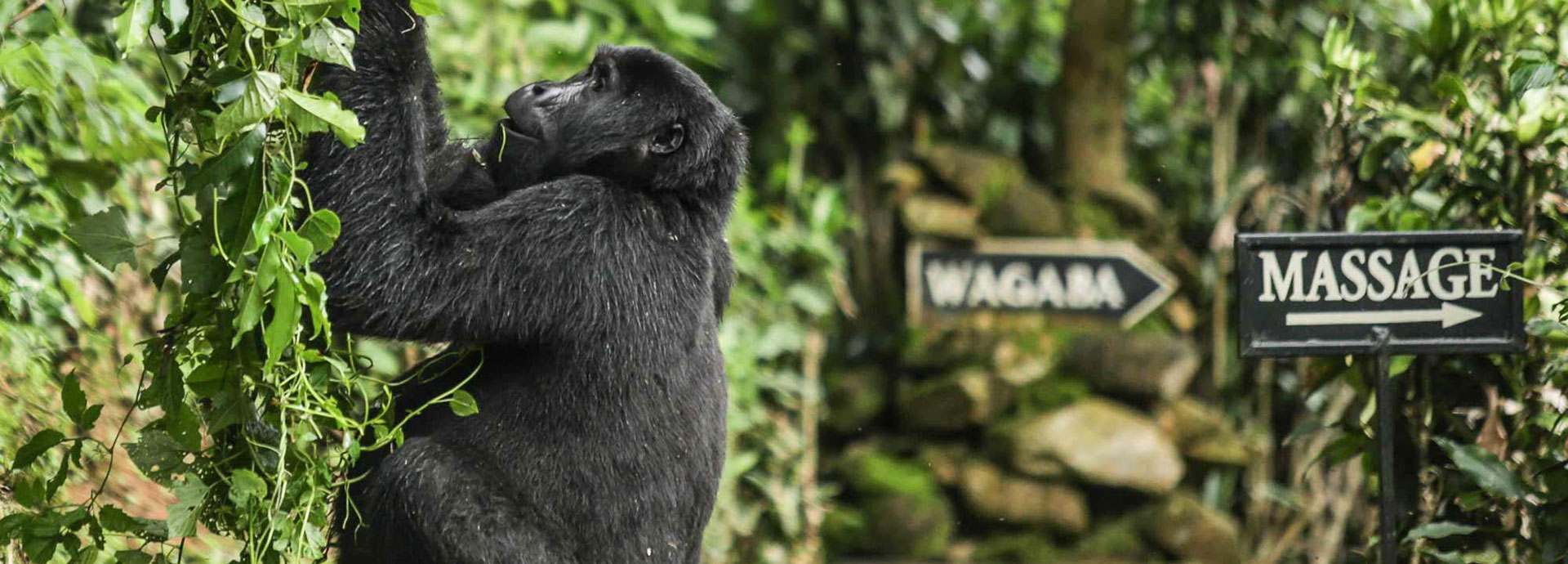
WHAT TO EXPECT ON THE DAY
You will meet at the park headquarters at 0730, where you will meet your guide and receive a briefing, before heading off on your trek. The gorillas cover large distances from day to day, as they roam the forest in search of areas of dense vegetation. For this reason, the time taken to track the gorillas varies enormously, from as little as half an hour to as much as nine hours. The guides will use their knowledge of the gorillas’ habits and information from the previous day to locate the group’s whereabouts in an effort to reduce the time it takes for you to locate them with your guide but you may need some patience and a certain amount of stamina!
No matter how long it takes to find them, your group will have a maximum of one hour with the gorillas. This is to avoid causing the animals any undue stress or getting them too used to human interaction. You will then return to the park headquarters and get transferred back to your hotel.
Conditions vary according to the location of the gorillas and the terrain can sometimes be difficult with steep slopes and dense vegetation. In addition, the altitude means participants do need to have a certain level of physical fitness to enjoy the hike. However porters are always available for hire to help out at additional cost of about US$15.
If for some reason you are unable to complete your excursion to the gorillas you will be escorted back to the base of the trail by a porter.
IN THE COMPANY OF GORILLAS
When you reach the gorillas, the tracker may make soft grunting sounds to tell the gorillas that friends are approaching. You are likely to reach their location during their long midday rest and play period. At this time of day the dominant male (usually a silverback) generally lounges on the ground or against a tree while youngsters roll in the vegetation and climb on trees, vines, and each other. Females nurse and play with their infants. Occasionally, a curious youngster may approach you or someone in your group. Though it is tempting, do NOT touch the Gorillas.
Your trekking group will be instructed to stay together and crouch down whilst observing the gorillas. This is so the dominant male can see you at all times and the family does not feel threatened, surrounded, or overwhelmed. Although you may find a gorilla looking directly at you, you should maintain a subservient stance and look at it sideways or from a lower height.
Sometimes, as a release of tension or as a display to the rest of the group, a male gorilla may charge whilst pulling up vegetation and beating his chest. It is quite a sight but it’s vital that you remain calm, stand your ground and maintain a subordinate, position. The gorilla will stop before reaching you!
GORILLA ETIQUETTE
Strict rules are in place to ensure the safety of both gorillas and visitors. You will be given clear instructions by your guide and you must follow their instructions at all times.
- You will not be able to track the gorillas if you are unwell because gorillas are highly susceptible to human illnesses. If you suspect that you have a contagious illness such as a common cold, influenza or diarrhoea, report to the guide at the park headquarters. In certain cases, you may be refunded the cost of your gorilla permit. If you do not disclose your illness and the guide detects it you will be barred from trekking and your permit price will not be refunded.
- If you feel the urge to cough or sneeze when you are near the gorillas, please turn your head away and cover your nose and mouth in order to minimize the spread of bacteria or viruses.
- Avoid taking an excessive number of photographs and never use flash photography. Tape over your flash if you cannot switch it off and make sure your cameras sound effects are turned to silent.
- Try to maintain a distance of seven metres from the gorillas and keep your voices down. In reality you are likely to get closer than this, particularly if they approach you, but the further back you are, the more relaxed the group will be.
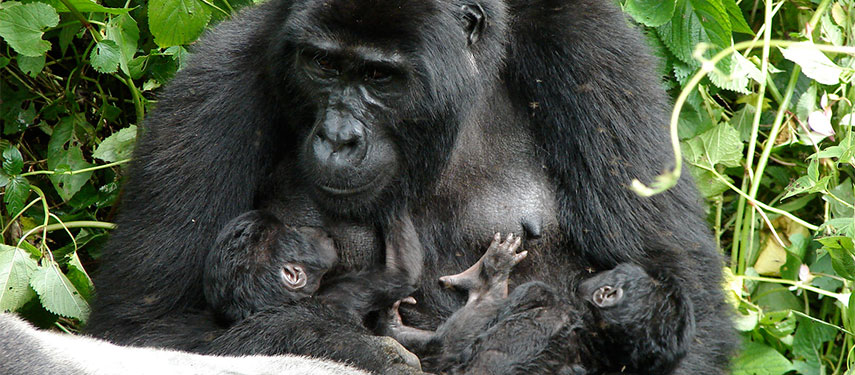
TIPPING GUIDE
Tipping is always greatly appreciated but is discretionary and the following should be treated as a guide only.
- Head guide for the trek – US$20
- Porter/s (unless privately hired, porters are not paid a salary so your tip is their only payment) – US$15 each
- Gorilla trackers (there are sometimes up to 4) – US$5 each
- Additional assistant guides or National Parks accompanying staff – US$5 each

